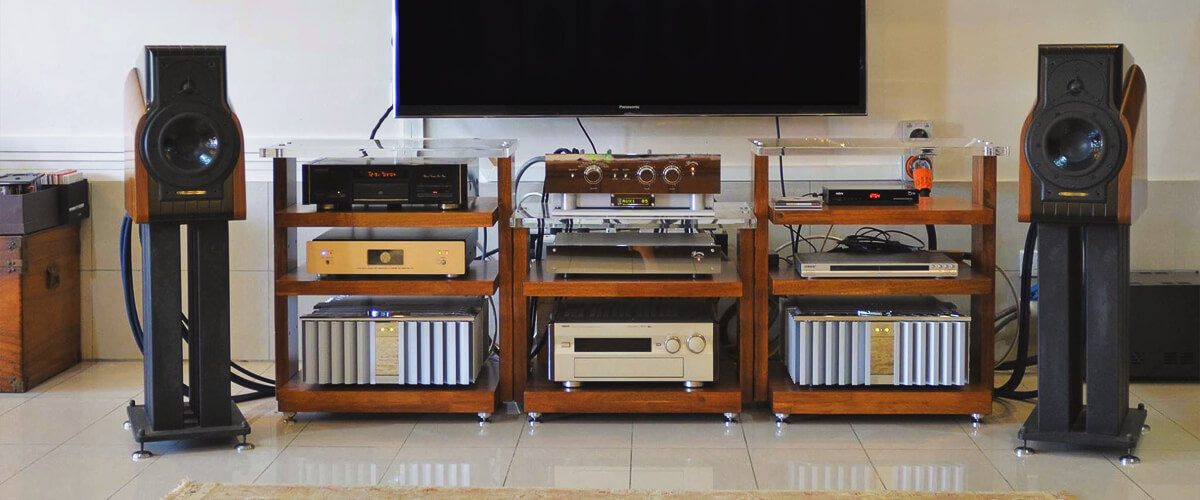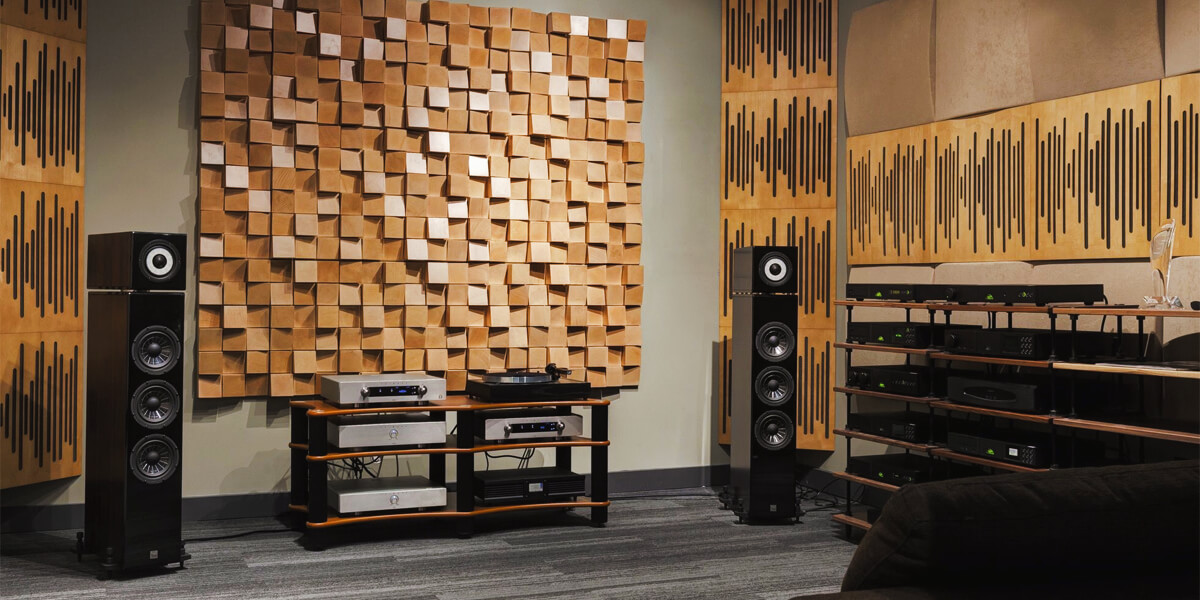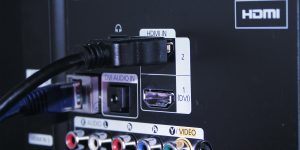Optimal AV receiver performance is important for an immersive and enjoyable audiovisual experience. It serves as the main of your home theater system, delivering high-quality sound and video signals to your speakers and display devices. With precise decoding, amplification, and signal processing capabilities, an optimized AV receiver unlocks the true potential of your audiovisual content, providing lifelike sound reproduction and seamless integration with your home receiver setup.
In fact, certain rules and guidelines will make your AV Receiver sound better. I highlighted the main points you should pay attention to when working with this device to improve your sound.
In this article, we’ll talk about improving AV receiver sound quality. I’ll closely examine some good methods and share essential tips with you.
Choosing the right AV receiver

I have identified several important criteria based on my many years of experience with AV receivers. They are key when choosing such equipment and determining sound and video quality. Now I want to talk to you about them in more detail.
Power ratings and impedance
Power ratings indicate the receiver’s capability to deliver sufficient audio output, while impedance ensures compatibility with speakers. Optimal matching of power ratings and impedance guarantees ideal performance and prevents damage.
Connectivity options
When selecting an AV receiver, it’s essential to consider connectivity options. Look for receivers that offer a wide range of inputs and outputs, including HDMI, optical, and coaxial ports, as well as Bluetooth and Wi-Fi capabilities. Ensure compatibility with your devices and future-proof your setup for seamless connectivity and enhanced audiovisual experiences.
Room correction features
Room correction features are crucial considerations when choosing an AV receiver. Look for models equipped with advanced technologies like automatic speaker calibration and room EQ. These features analyze your room’s acoustics and optimize audio settings accordingly, delivering a more balanced and immersive sound experience tailored to your specific environment.
Proper speaker placement
Proper speaker placement is essential for optimizing sound quality when using AV receivers. Correct positioning and alignment of speakers can significantly enhance the audio experience by ensuring accurate imaging, balanced frequency response, and optimal surround sound effects.
Speaker positioning for stereo and surround sound
Achieve optimal audio immersion with proper speaker placement. For stereo sound, position speakers at ear level, equidistant from the listening position, and angled slightly inward. For surround sound, place the front speakers at ear level, surround speakers to the sides or slightly behind, and the center speaker above or below the display.
Adjusting speaker angles and heights
Fine-tuning speaker angles and heights can significantly enhance your audio experience. Properly positioning speakers at optimal angles directs sound waves toward the listener, resulting in improved clarity, imaging, and soundstage. By adjusting the height of speakers, you can achieve better balance and imaging, especially when aligning them with ear level. This positioning minimizes unwanted reflections and optimizes the overall sound reproduction. Experimenting with different angles and heights lets you personalize your audio setup, ensuring that every detail, from delicate notes to powerful bass, is faithfully reproduced. Take the time to adjust your speaker angles and heights, and you’ll be rewarded with an immersive and lifelike sound that brings your music, movies, and games to life in a whole new way.
Acoustic room treatment

Recently my colleague asked me how he could take care of the acoustic room treatment. He was slightly surprised that there were certain recommendations to follow. However, they are really important for achieving high-quality sound. Let’s look at them in more detail.
Identifying problem areas
Identify and address problem areas in your room for optimal acoustic treatment. Look out for excessive echoes, flutter echoes, or standing waves caused by reflective surfaces. Use absorption panels to reduce reflections, bass traps to tackle low-frequency issues, and diffusers to distribute sound evenly. Create a balanced and pleasing listening environment.
Sound-absorbing materials
Enhance your acoustic room with top-notch sound-absorbing materials. Some innovative solutions deliver exceptional noise reduction and echo control. Experience superior sound clarity and create an optimal environment for music production, recording studios, home theaters, or offices.
I’ve prepared a table with some top-notch sound-absorbing materials that can enhance your acoustic room:
| Sound-absorbing material | Description |
|---|---|
| Acoustic panels | Acoustic panels are commonly used for noise reduction and echo control. They are made of sound-absorbing materials such as foam, fabric-wrapped fiberglass, or perforated wood. They come in various sizes and designs and can be easily installed on walls or ceilings. |
| Acoustic baffles | They are suspended vertically from the ceiling to absorb sound reflections and control echoes. Acoustic baffles are typically made of fabric-wrapped fiberglass or mineral wool. Baffles are effective in large spaces like auditoriums, gyms, or open-plan offices. |
| Bass traps | Bass traps are designed to absorb low-frequency sounds, particularly deep bass notes. They are usually placed in corners where low-frequency sound tends to build up. Bass traps can be made of foam or rigid fiberglass and help in reducing room resonances and standing waves. |
| Diffusers | Diffusers scatter sound waves in multiple directions, reducing the intensity of reflections and echoes. They are commonly used in music studios, concert halls, or home theaters. Diffusers can be made of wood, plastic, or foam and come in various geometric patterns to break up sound waves. |
| Soundproof curtains | Soundproof curtains, also known as acoustic curtains, are made of dense materials and effectively reduce noise transmission through windows or as room dividers. They typically have multiple layers of fabric, mass-loaded vinyl, and sound-absorbing material to block and absorb sound. |
| Green glue | It is a viscoelastic compound that is used between layers of drywall or other building materials to dampen sound vibrations. It converts sound energy into heat, reducing noise transmission. Green Glue is effective in soundproofing walls, ceilings, and floors and is often used in construction projects. |
These innovative sound-absorbing materials deliver exceptional noise reduction and echo control, enhancing the acoustic quality of your room or space.
Bass traps and diffusers
They will allow you to achieve control of low frequencies and eliminate their unwanted accumulation, providing a balanced sound. Bass traps and diffusers also improve room acoustics by effectively dispersing sound waves, creating a spacious and immersive sound experience.
Calibrating your system
Let’s talk now about calibrating your system. I’ve headlined several important tips and want to share them with you.
Using built-in room correction software
Enhance your AV receiver’s audio performance with the built-in room correction software. By utilizing advanced algorithms, this feature analyzes your room’s acoustics and adjusts the audio settings accordingly, resulting in a more balanced and immersive sound experience.
Manual calibration techniques
Begin by properly positioning your speakers and adjusting their angles for optimal audio dispersion. Fine-tune settings such as speaker distances, levels, and crossover frequencies to achieve a balanced and accurate soundstage.
High-quality audio sources

While the quality of your speakers and receiver is essential, the audio source itself plays a crucial role. Now, I want to explore various high-quality audio sources that can elevate the sound output of your AVR.
| Audio Source | Description |
|---|---|
| Lossless Audio Formats | These formats preserve the original audio quality without any compression or data loss. They include FLAC (Free Lossless Audio Codec), ALAC (Apple Lossless Audio Codec), and WAV (Waveform Audio File Format). |
| Streaming Services | Several streaming platforms offer high-quality audio options for subscribers. Examples include Tidal, Deezer HiFi, and Amazon Music HD. These services provide lossless or high-resolution audio streams, offering improved fidelity compared to standard compressed formats. |
| Physical Media |
Compact Discs (CDs) deliver high-quality audio, providing a reliable source for pristine sound reproduction. CDs offer uncompressed audio with a sampling rate of 44.1 kHz and a bit depth of 16 bits, resulting in faithful audio playback. Super Audio CDs (SACDs) are an enhanced audio format that provides higher resolution and greater dynamic range compared to standard CDs. SACDs can deliver multi-channel surround sound and high-resolution stereo audio, making them a preferred choice for audiophiles. Vinyl records have made a comeback due to their warm, analog sound. Vinyl offers a unique listening experience and is appreciated for its rich, organic sound reproduction. Though susceptible to imperfections and degradation over time, vinyl records can provide a distinct audio quality cherished by enthusiasts. |
High-quality audio sources, such as these, can significantly enhance your listening experience. By leveraging these sources, you can unlock the full potential of your AV receiver and enjoy audio playback that is faithful, immersive, and rich in detail.
Enhancing your AV receiver with external components
It’s my last recommendation for you. But it’s also a vital moment. Let’s consider how you can enhance your AV receiver with external components.
External amplifiers: pre-outs and when to use them
External amplifiers, equipped with pre-outs, enhance your audio system’s power and versatility. Pre-outs allow you to connect additional amplifiers, resulting in higher output levels and improved sound quality. Utilize pre-outs when seeking greater volume, driving demanding speakers, or customizing your setup with multiple amplifiers.
Upgrading cables and interconnects
Elevate your AV receiver’s sound quality by upgrading cables and interconnects. These external components have a significant impact on audio fidelity. By investing in high-quality cables, you can minimize signal loss, reduce interference, and achieve clearer and more detailed sound reproduction.
Power conditioning and surge protection
These essential external components shield your equipment from power fluctuations, voltage spikes, and electrical noise, ensuring a stable and clean power supply.




